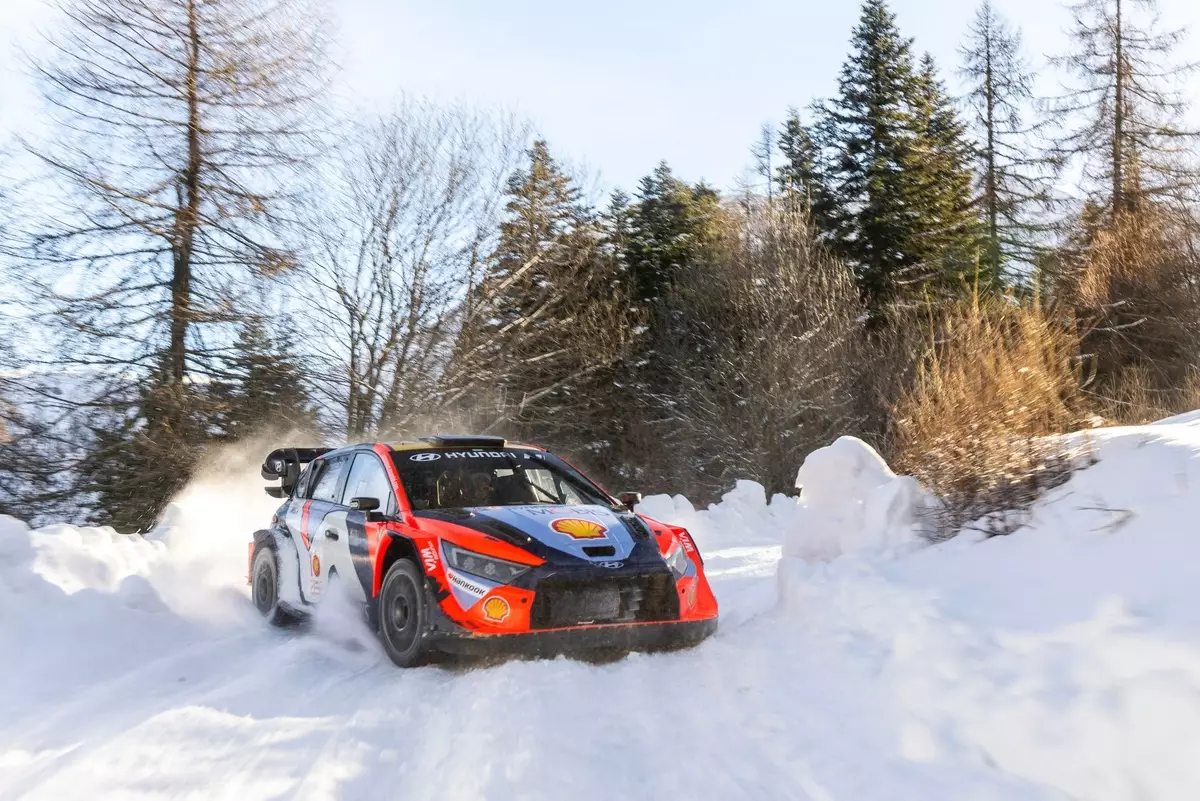The World Rally Championship (WRC) is set to witness a significant shift in its dynamics with the introduction of 2025 specification cars that will operate without hybrid power. This change comes as part of the FIA’s new technical regulations, aiming to redefine the performance and driving experience of Rally1 vehicles. Hyundai Motorsport’s Ott Tanak, an experienced driver and world champion, has shared his insights on how these developments are set to impact the sport.
The Simplification of Rally Car Design
One of the most compelling aspects of the new regulation framework is the simplification of car design. According to Tanak, the removal of hybrid systems has made the cars “much simpler” and more intuitive to drive. In previous seasons, drivers had to juggle complex strategies regarding hybrid power usage, which often complicated the driving experience. The return to a more straightforward car design harkens back to an era where rally racing relied more on driver skill and less on technological aids.
This simplification is not only advantageous for drivers but also beneficial for the teams and engineers responsible for car development. The expectation is that as the cars now come equipped with a single engine power source—specifically, a turbocharged 1.6-litre engine that does not rely on hybrid technology—teams can focus their efforts on optimizing performance and handling rather than managing dual power sources.
Another notable change is the reduction of the cars’ weight by approximately 87 kilograms due to the removal of hybrid components. This significant decrease translates to enhanced agility on the road, which is a crucial factor in rally racing, where maneuvers through tricky terrains and tight turns are the norms. Tanak emphasizes that the lightweight nature makes the car feel “more playful,” a characteristic that drivers highly value in the sport.
However, the shift towards lighter vehicles does not come without trade-offs. The slight reduction in turbocharger diameter limits the power output, presenting a challenging balance between handling and sheer speed. Tanak acknowledges this nuance by stating that while the reduction in power might not be ideal, overall, the new setup aligns with the intrinsic characteristics of a rally car.
Testing the Waters: The Role of New Tyres
While the new design and weight benefits are promising, the performance of the new Hankook tyres remains an unknown. Drivers gearing up for the competitive season opener in Monte Carlo have embraced testing and adaptation to these changes. For Tanak, confidence is a major factor, and he states that compared to the previous year, he feels “much more comfortable” in his i20 N. This confidence can be a game-changer as the season progresses.
Building rapport with the car and team creates a sense of familiarity that positively influences performance. Tanak’s observation that he feels more at home in the car despite the challenges posed by tyre performance is a testament to the psychological aspects of racing. A strong driver-car relationship often spells success, underscoring the importance of preparation and teamwork in the high-stakes world of rally racing.
Transitioning into a new era of rally racing inevitably brings its own set of challenges. The change from hybrid to non-hybrid cars requires drivers to recalibrate their mental approach to racing. For Tanak, who has faced context-switching across teams and vehicle models over the years, this new season demands a fresh perspective while still leaning on his past experiences.
The Monte Carlo rally stands as an iconic event where many drivers hope to leave a mark, and for Tanak, it represents a chance to return to a more familiar style of racing. He notes that earlier iterations of the rally provided more enjoyment and that the simpler car mechanics might allow drivers to reconnect with the thrill of racing.
As the WRC embarks on this new journey without hybrid power, the insights shared by drivers like Ott Tanak highlight the excitement and apprehension surrounding these changes. The trend toward simplicity, agility, and a focus on foundational driving skills might compel both veterans and novices in the rally community to rethink their approach to competition. With a fine balance between nostalgia and innovation, the 2025 season promises to begin a new chapter that could redefine rally racing for years to come.

